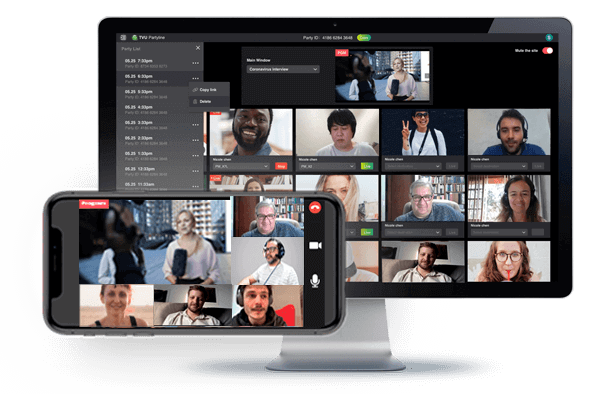To counter empty stadiums and capture the excitement of live sports for fans sitting at home, teams and leagues should look to virtualizing video production in the cloud to help elevate the live game experience by addressing video latency, frame rate and resolution....

It’s Time To Move Past The Videoconferencing App Look
By Paul Shen, TVU Networks
August 20th, 2020
As the COVID-19 pandemic continues to leave its mark on TV production, it’s time broadcasters begin to evaluate the stopgap measures put in place to accommodate healthcare recommendations and government mandates to social distance.
Leading the list of things needing a critical examination is use of videoconferencing apps like Zoom, Skype, Teams and Slack to connect talent and guests on air for interviews. While they filled a void, these apps leave a lot to be desired when it comes to producing television, especially if the goal is produce high-quality TV.
Not only is the quality of video often lacking, but the latency common with these products can make for awkward, less-than-spontaneous interviews.
Audience Engagement and Quality
Last week in this space, I laid out several steps the NBA could take to improve its virtual fan presentation –the video of fans streaming in from their homes that’s displayed on videowalls at Disney’s Wide World of Sports complex in Orlando. I also discussed the importance of fans in the stands to draw in viewers and heighten their engagement with televised games.
The same problems responsible for the unappealing presentation of virtual fans in Orlando come into play when using videoconferencing apps to conduct interviews on air—whether they involve multiple guests or a single newsmaker, expert, athlete or even fan offering insight.
Those problems center on latency, frame rate and video quality. The problem with latency is it makes the back-and-forth of an interview seem unnatural. Rather than the very fast give-and-take viewers expect, latency actually draws attention to itself and away from the conversation.
Similarly, the quality of video and the lower-than-standard frame rates frequently employed by the cameras used for interviews done with videoconferencing apps can become big distractions for viewers as well, further diminishing their engagement with the content.
Let’s Get This Party Started
Our TVU Partyline offers broadcasters a professional alternative to consumer videoconferencing apps. It delivers many features broadcasters deemed essential, such as mix-minus, before the coronavirus outbreak forced them to make compromises with remote production as the pandemic worsened.
Partyline specifically addresses the problems with latency, low resolution and lower frame rates. At its core, TVU Partyline offers a Real Time Interactive Layer that provides for no observable video and audio delay, ensuring viewers stay engaged with what’s being said, not distracted by unwanted pauses. Further, Partyline leverages TVU’s StatMux Plus (IS+) technology to ensure full broadcast-quality, synced video and audio signals are transported, removing low-resolution, low frame-rate video as a concern.
Beyond the Interview
Besides making it possible for broadcasters to deliver engaging interviews—free from latency at full resolution and frame rate, Partyline offers a variety of intercom and IFB type features that make production easier. However, that’s the subject of another blog.
The important thing broadcasters must recognize is that the frenetic phase of activity aimed at maintaining operations in the face of the COVID-19 pandemic has given way to the next phase where the focus is on bringing quality up to the level of pre-outbreak expectations. When it comes to bringing in remote guests to a production, Partyline is a good way to make that happen.